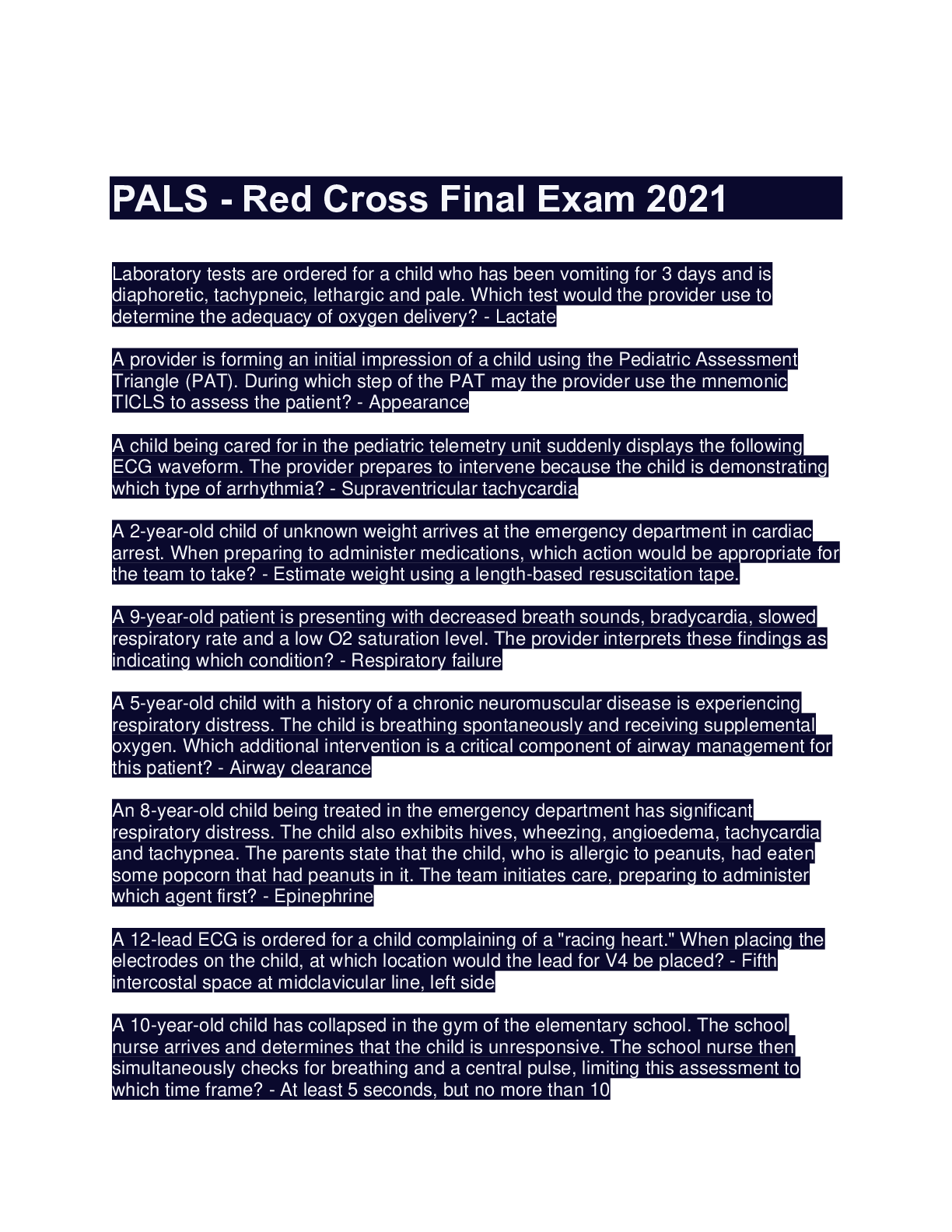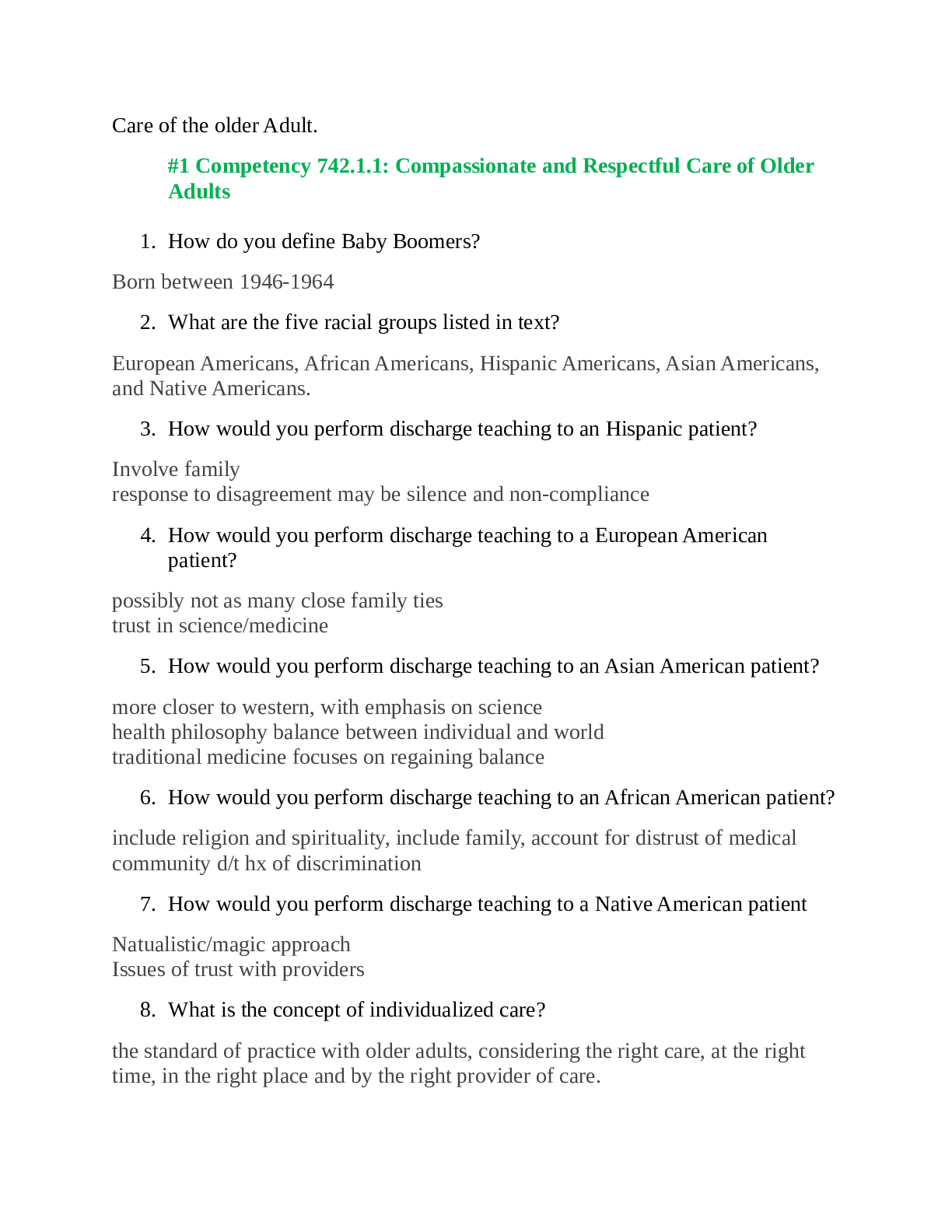SOPHIA_UNIT_3_STATISTICS_MILESTONE_2020 - University of Alabama | SOPHIA_UNIT_3_STATISTICS_MILESTONE_2020
Document Content and Description Below
SOPHIA_UNIT_3_STATISTICS_MILESTONE_2020 - University of Alabama
SOPHIA_UNIT_3_STATISTICS_MILESTONE_2020
UNIT 3 — MILESTONE 3
Score 25/27
You passed this Milestone
25 questions were answered co
...
rrectly.
2 questions were answered incorrectly.
1
Zhi and her friends moved on to the card tables at the casino. Zhi wanted to figure out the probability of drawing a black Queen or a black Jack.
Choose the correct probability of drawing a black Queen or a black Jack. Answer choices are in the form of a percentage, rounded to the nearest whole number.
15%
8%
25%
4%
RATIONALE
Since the two events, drawing a black Queen and drawing a black Jack, are non-overlapping, we can use the following formula:
Note that it is possible to get two black Queens (Queen of Spades or Queen of Clubs) and it is possible to get two black Jacks (Jack of Spades or Jack of Clubs).
CONCEPT
"Either/Or" Probability for Non-Overlapping Events
2
Which of the following situations describes a discrete distribution?
A probability distribution showing the average time it takes for children to walk to school.
A probability distribution showing the heights of children in a first grade class.
A probability distribution of the quantity of babies in the intensive care unit.
A probability distribution showing the weights of newborns.
RATIONALE
A distribution is discrete if the outcomes we are measuring can only take on a limited number of values. The number of babies in an intensive care unit can be 0, 1, 2, and so on, which are a limited set of values.
CONCEPT
Probability Distribution
3 T
racie spins the four-colored spinner shown below. She records the total number of times the spinner lands on the color red and constructs a graph to visualize her results.
Which of the following statements is TRUE?
If Tracie spins the spinner 4 times, it will land on red at least once.
If Tracie spins the spinner 1,000 times, it would land on red close to 250 times.
If Tracie spins the spinner 1,000 times, the relative frequency of it landing on red will remain constant.
The theoretical probability of the spinner landing on red will change with every spin completed.
RATIONALE
If we make the assumption that the area of the colors represents the true proportion, then each color is equally weighted. Since there are four colors we would expect them to come up roughly 1/4 of the time. So on 1000 rolls the expected value = n*p = 1000*0.25 = 250.
CONCEPT
Law of Large Numbers/Law of Averages
4
John is playing a game with a standard deck of playing cards. He wants to draw a jack on the first try.
Which of the following statements is true?
The probability that John draws a jack on the first try is 1/13. If John replaces the card, re-shuffles, and draws again, the probability that he will pull another jack stays the same.
The probability that John draws a jack on the first try is 1/13. If John replaces the card, re-shuffles, and draws again, the probability that he will pull another jack decreases.
The probability that John draws a jack on the first try is 3/13. If John replaces the card, re-shuffles, and draws again, the probability that he will pull another jack stays the same.
The probability that John draws a jack on the first try is 1/13. If John replaces the card, re-shuffles, and draws again, the probability that he will pull another jack increases.
RATIONALE
Events are said to be independent if one event does not influence the likelihood of the other. Since John re-shuffles the deck and puts the card back in the deck, the probability should be the same and the first draw will not influence the second.
CONCEPT
Independent vs. Dependent Events
5
Annika was having fun playing poker. She needed the next two cards dealt to be diamonds so she could make a flush (five cards of the same suit). There are 15 cards left in the deck, and five are diamonds.
What is the probability that the two cards dealt to Annika (without replacement) will both be diamonds? Answer choices are in percentage format, rounded to the nearest whole number.
29%
13%
33%
https://www.coursehero.com/file/64074503/SOPHIA-UNIT-3-STAT-MILESTONEpdf/
This study resource was
shared via CourseHero.com10%
RATIONALE
If there are 15 cards left in the deck with 5 diamonds, the probability of being dealt 2 diamonds if they are dealt without replacement means that we have dependent events because the outcome of the first card will affect the probability of the second card. We can use the following formula:
The probability that the first card is a diamond would be 5 out of 15, or . The probability that the second card is a diamond, given that the first card was also a diamond, would be because we now have only 14 cards remaining and only 4 of those cards are diamond (since the first card was a diamond).
So we can use these probabilities to find the probability that the two cards will both be diamonds:
CONCEPT
"And" Probability for Dependent Events
6
What is the probability of NOT rolling a four when rolling a six sided die?
RATIONALE
Recall that the probability of a complement, or the probability of something NOT happening, can be calculated by finding the probability of that event happening, and then subtracting from 1. Note that the probability of rolling a four would be 1/6. So the probability of NOT rolling a four is equivalent to:
CONCEPT
Complement of an Event
7
Mark looked at the statistics for his favorite baseball player, Jose Bautista. Mark looked at seasons when Bautista played 100 or more games and found that Bautista's probability of hitting a home run in a game is 0.173.
If Mark uses the normal approximation of the binomial distribution, what will be the variance of the number of home runs Bautista is projected to hit in 100 games? Answer choices are rounded to the tenths place.
17.3
0.8
14.3
3.8
RATIONALE
In this situation, we know:
n = sample size = 100
p = success probability = 0.173
We can also say that q, or the complement of p, equals:
q = 1 - p = 1 - 0.173 = 0.827
The variance is equivalent to n*p*q:
CONCEPT
Normal Distribution Approximation of the Binomial Distribution
8
Dan is playing a game where he selects a card from a deck of four cards, labeled 1 , 2, 3, or 4. The possible cards and probabilities are shown in the probability distribution below.
What is the expected value for the card that Dan selects?
3.5
2.5
2.0
1.0
RATIONALE
The expected value, also called the mean of a probability distribution, is found by adding the products of each individual outcome and its probability. We can use the following formula to calculate the expected value, E(X):
CONCEPT
Expected Value
9
Sadie is selecting two pieces of paper at random from the stack of colored paper in her closet. The stack contains several sheets of each of the standard colors: red, orange, yellow, green, blue, and violet.
All of the following are possible outcomes for Sadie's selection, EXCEPT:
Red, red
Blue, black
Orange, yellow
Green, violet
RATIONALE
Since black is not part of the original set, it cannot be chosen into the sample.
CONCEPT
Outcomes and Events
10
Luke went to a blackjack table at the casino. At the table, the dealer has just shuf https://www.coursehero.com/file/64074503/SOPHIA-UNIT-3-STAT-MILESTONEpdf/ fled a standard deck of 52 cards.
This study resource was
shared via CourseHero.comLuke has had good luck at blackjack in the past, and he actually got three blackjacks with Queens in a row the last time he played. Because of this lucky run, Luke thinks that Queens are the luckiest card.
The dealer deals the first card to him. In a split second, he can see that it is a face card, but he is unsure if it is a Queen.
What is the probability of the card being a Queen, given that it is a face card? Answer choices are in a percentage format, rounded to the nearest whole number.
77%
4%
33%
8%
RATIONALE
The probability of it being a Queen given it is a Face card uses the conditional formula:
Note that there are 12 out of 52 that are face cards. Of those 12 cards, only 4 of them are also Queens.
CONCEPT
Conditional Probability
11
Maria flipped a coin 60 times, and the coin came up tails 32 times.
What is the relative frequency of the coin turning up heads in this experiment? Answer choices are rounded to the hundredths place.
0.53
0.47
2.14
1.88
RATIONALE
Recall that, of the 60 flips, there are 32 tails. This means the remaining are heads, or 60-32 = 28 heads. The relative frequency of a head is:
CONCEPT
Relative Frequency Probability/Empirical Method
12
A credit card company surveys 125 of their customers to ask about satisfaction with customer service. The results of the survey, divided by gender, are shown below.
Males Females
Extremely Satisfied 25 7
Satisfied 21 13
Neutral 13 16
Dissatisfied 9 14
Extremely Dissatisfied 2 5
If a survey is selected at random, what is the probability that the person is a female with neutral feelings about customer service? Answer choices are rounded to the hundredths place.
0.81
0.19
0.5
0.13
0.29
RATIONALE
If we want the probability of selecting a survey that is from a female who marked "neutral feelings," we just need to look at the box that is associated with both categories, or 16. To calculate the probability, we can use the following formula:
CONCEPT
Two-Way Tables/Contingency Tables
13
A basketball player makes 60% of his free throws. We set him on the free throw line and asked him to shoot free throws until he misses. Let the random variable X be the number of free throws taken by the player until he misses.
Assuming that his shots are independent, find the probability that he will miss the shot on his 6th throw.
0.04666
0.00614
0.01866
0.03110
RATIONALE
Since we are looking for the probability until the first success, we will use the following Geometric distribution formula: P left parenthesis X equals k right parenthesis equals left parenthesis 1 minus p right parenthesis to the power of k minus 1 end exponent p
The variable k is the number of trials until the first success, which in this case, is 6 throws.
The variable p is the probability of success, which in this case, a success is considered missing a free throw. If the basketball player has a 60% of making it, he has a 40%, or 0.40, chance of missing.
CONCEPT
Geometric Distribution
14
Which of the following is a condition of binomial probability distributions?
All observations are made randomly.
All observations made are dependent on each other.
All observations made are independent of each other.
All observations are mutually exclusive.
RATIONALE
In the binomial distribution we always assume independence of trials. This is why we simply multiply the probability of successes and failures directly to find the overall probability https://www.coursehero.com/file/64074503/SOPHIA-UNIT-3-STAT-MILESTONEpdf/ .
This study resource was
shared via CourseHero.comCONCEPT
Binomial Distribution
15
Kyle was trying to decide which type of soda to restock based on popularity: regular cola or diet cola. After studying the data, he noticed that he sold less diet cola on weekdays and weekends. However, after combing through his entire sales records, he actually sold more diet cola than regular cola.
Which paradox had Kyle encountered?
False Negative
Benford's Law
False Positive
Simpson's Paradox
RATIONALE
This is an example of Simpson's paradox, which is when the trend overall is not the same that is examined in smaller groups. Since the sale of diet coke overall is larger but this trend changes when looking at weekend/weekday, this is a reversal of the trend.
CONCEPT
Paradoxes
16
Eric is randomly drawing cards from a deck of 52. He first draws a red card, places it back in the deck, shuffles the deck, and then draws another card.
What is the probability of drawing a red card, placing it back in the deck, and drawing another red card? Answer choices are in the form of a percentage, rounded to the nearest whole number.
25%
22%
4%
13%
RATIONALE
Since Eric puts the card back and re-shuffles, the two events (first draw and second draw) are independent of each other. To find the probability of red on the first draw and second draw, we can use the following formula:
Note that the probability of drawing a red card is or for each event.
CONCEPT
"And" Probability for Independent Events
17
The gender and age of Acme Painting Company's employees are shown below.
Age Gender
23 Female
23 Male
24 Female
26 Female
27 Male
28 Male
30 Male
31 Female
33 Male
33 Female
33 Female
34 Male
36 Male
37 Male
38 Female
40 Female
42 Male
44 Female
If the CEO is selecting one employee at random, what is the chance he will select a male OR someone in their 40s?
1/2
1/3
11/18
1/18
RATIONALE
Since it is possible for an employee to be a male and a person in their 40s, these two events are overlapping. We can use the following formula:
Of the 18 employees, there are 9 females and 9 males, so . There are a total of 3 people in their 40s, so . Of the people in their 40s, only one is male so .
CONCEPT
"Either/Or" Probability for Overlapping Events
18
Select the following statement that describes overlapping events.
Amanda wants a black card so she can have a winning hand, and she receives the two of hearts.
Receiving a Jack of diamonds meets the requirement of getting both a Jack and a diamond.
Amanda understands that she cannot get a black diamond when playing poker.
Amanda rolls a three when she needed to roll an even number.
RATIONALE
Events are overlapping if the two events can both occur in a single trial of a chance experiment. Since she wants a Jack {Jack of Hearts, Jack of Clubs, Jack of Diamonds, Jack of Spades} and a diamond {Ace, 2, 3, 4, 5, 6, 7, 8, 9, 10, Jack, Queen, or King: all as diamonds}, the overlap is Jack of Diamonds.
CONCEPT
Overlapping Events
19
A bag contains 8 red marbles, 7 blue marbles, and 6 green marbles. Adam randomly picks out a marble from the bag.
What is the theoretical probability that Adam will pick a blue marble from the bag?
https://www.coursehero.com/file/64074503/SOPHIA-UNIT-3-STAT-MILESTONEpdf/
This study resource was
shared via CourseHero.comRATIONALE
Recall that there are 7 blue marbles and a total of 8+7+6 = 21 marbles overall. The probability of a blue is:
CONCEPT
Theoretical Probability/A Priori Method
20
The average number of babies born at a private hospital's maternity wing is 6 per hour.
What is the probability that three babies are born during a particular 1-hour period in this maternity wing?
0.20
0.09
0.13
0.16
RATIONALE
Since we are finding the probability of a given number of events happening in a fixed interval when the events occur independently and the average rate of occurrence is known, we can use the following Poisson distribution formula:
P left parenthesis X equals k right parenthesis equals fraction numerator lambda to the power of k e to the power of negative lambda end exponent over denominator k factorial end fraction
The variable k is the given number of occurrences, which in this case, is 3 babies.
The variable λ is the average rate of event occurrences, which in this case, is 6 babies.
CONCEPT
Poisson Distribution
21
Two sets A and B are shown in the Venn diagram below.
Which statement is TRUE?
Set A has 8 elements.
Sets A and B have 3 common elements.
Set B has 7 elements.
There are a total of 2 elements shown in the Venn diagram.
RATIONALE
The intersection, or middle section, would show the common elements, which is 3.
The number of elements of Set A is everything in Circle A, or 8+3 = 11 elements, not 8 elements.
The number of elements of Set B is everything in Circle B, or 7+3 = 10 elements, not 7 elements.
To get the total number of items in the Venn diagram, we add up what is in A and B and outside, which is 8+3+7+2=20 elements, not 2 elements.
CONCEPT
Venn Diagrams
22
Which of the following is an example of a false positive?
Test results confirm that a patient has cancer.
Test results confirm that a patient does not have cancer.
Test results indicate that a patient does not have cancer when, in fact, he does.
Test results indicate that a patient has cancer when, in fact, he does not.
RATIONALE
Since the test results indicate positively that the patient has cancer, when in fact cancer is not present, this is a false positive.
CONCEPT
False Positives/False Negatives
23
https://www.coursehero.com/file/64074503/SOPHIA-UNIT-3-STAT-MILESTONEpdf/
This study resource was
shared via CourseHero.comUsing this Venn diagram, what is the probability that event A or event B occurs?
0.36
0.77
0.68
0.41
RATIONALE
To find the probability that event A or event B occurs, we can use the following formula for overlapping events:
The probability of event A is ALL of circle A, or 0.24 + 0.41 = 0.65.
The probability of event B is ALL of circle B, or 0.12 + 0.41 = 0.53.
The probability of event A and B is the intersection of the Venn diagram, or 0.41.
We can also simply add up all the parts = 0.24 + 0.41 + 0.12 = 0.77.
CONCEPT
"Either/Or" Probability for Overlapping Events
24
Using the Venn Diagram below, what is the conditional
probability of event B occurring, assuming event A has happened [P(B|A)]?
0.41
0.77
0.63
0.24
RATIONALE
To get the probability of B given A has occurred, we can use the following conditional formula:
The probability of A and B is the intersection, or overlap, of the Venn diagram, which is 0.41.
The probability of A is all of Circle A, or 0.24 + 0.41 = 0.65.
CONCEPT
Conditional Probability
25
For a math assignment, Michelle rolls a set of three standard dice at the same time and notes the results of each trial.
What is the total number of outcomes for each trial?
216
36
27
18
RATIONALE
We can use the general counting principle and note that for each step, we simply multiply all the possibilities at each step to get the total number of outcomes. Each die has 6 possible outcomes. So the overall number of outcomes for rolling 3 die with 6 possible outcomes each is:
CONCEPT
Fundamental Counting Principle
26
John randomly selects a ball from a bag containing different colored balls. The odds in favor of his picking a red ball are 3:11.
What is the probability ratio for John picking a red ball from the bag?
RATIONALE
Recall that we can go from " " odds to a probability by rewriting it as the fraction " ". So odds of 3:11 is equivalent to the following probability:
CONCEPT
Odds
27
A credit card company surveys 125 of its customers to ask about satisfaction with customer service. The results of the survey, divided by gender, are shown below.
Males Females
https://www.coursehero.com/file/64074503/SOPHIA-UNIT-3-STAT-MILESTONEpdf/ Extremely Satisfied 25 7
This study resource was
shared via CourseHero.comSatisfied 21 13
Neutral 13 16
Dissatisfied 9 14
Extremely Dissatisfied 2 5
If you were to choose a female from the group, what is the probability that she is satisfied with the company's customer service? Answer choices are rounded to the hundredths place.
0.38
0.24
0.62
0.13
RATIONALE
The probability of a person being "satisfied" given she is a female is a conditional probability. We can use the following formula:
Remember, to find the total number of females, we need to add all values in this column: 7 + 13 + 16 + 14 + 5 = 55.
CONCEPT
Conditional Probability and Contingency Tables
© 2020 SOPHIA Learning, LLC. SOPHIA is a registered trademark of SOPHIA Learning, LLC.
About
Contact Us
Privacy Policy
Terms of Use
https://www.coursehero.com/file/64074503/SOPHIA-UNIT-3-STAT-MILESTONEpdf/
This study resource was
shared via CourseHero.com
Powered by TCPDF (www.tcpdf.org)
[Show More]
Last updated: 3 years ago
Preview 1 out of 7 pages




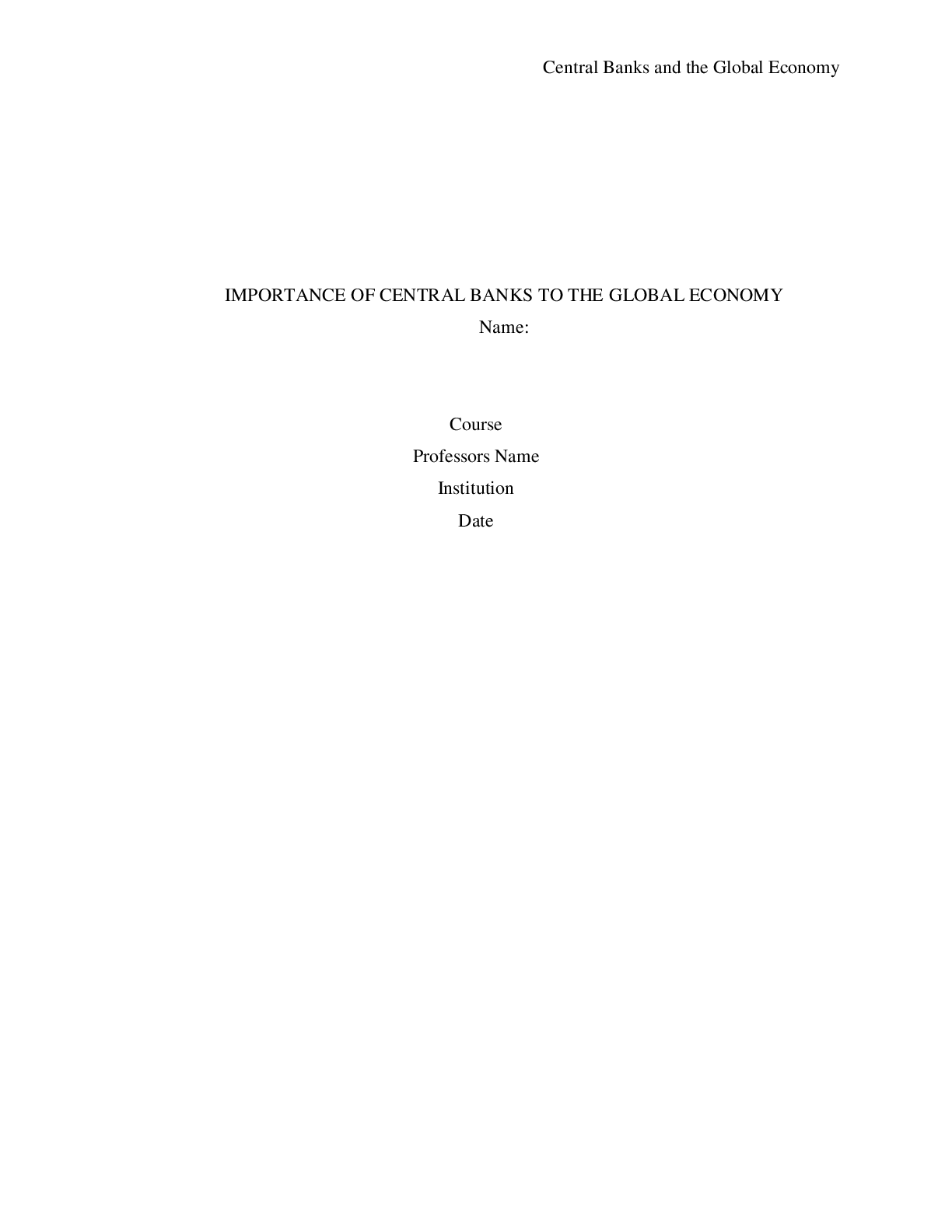

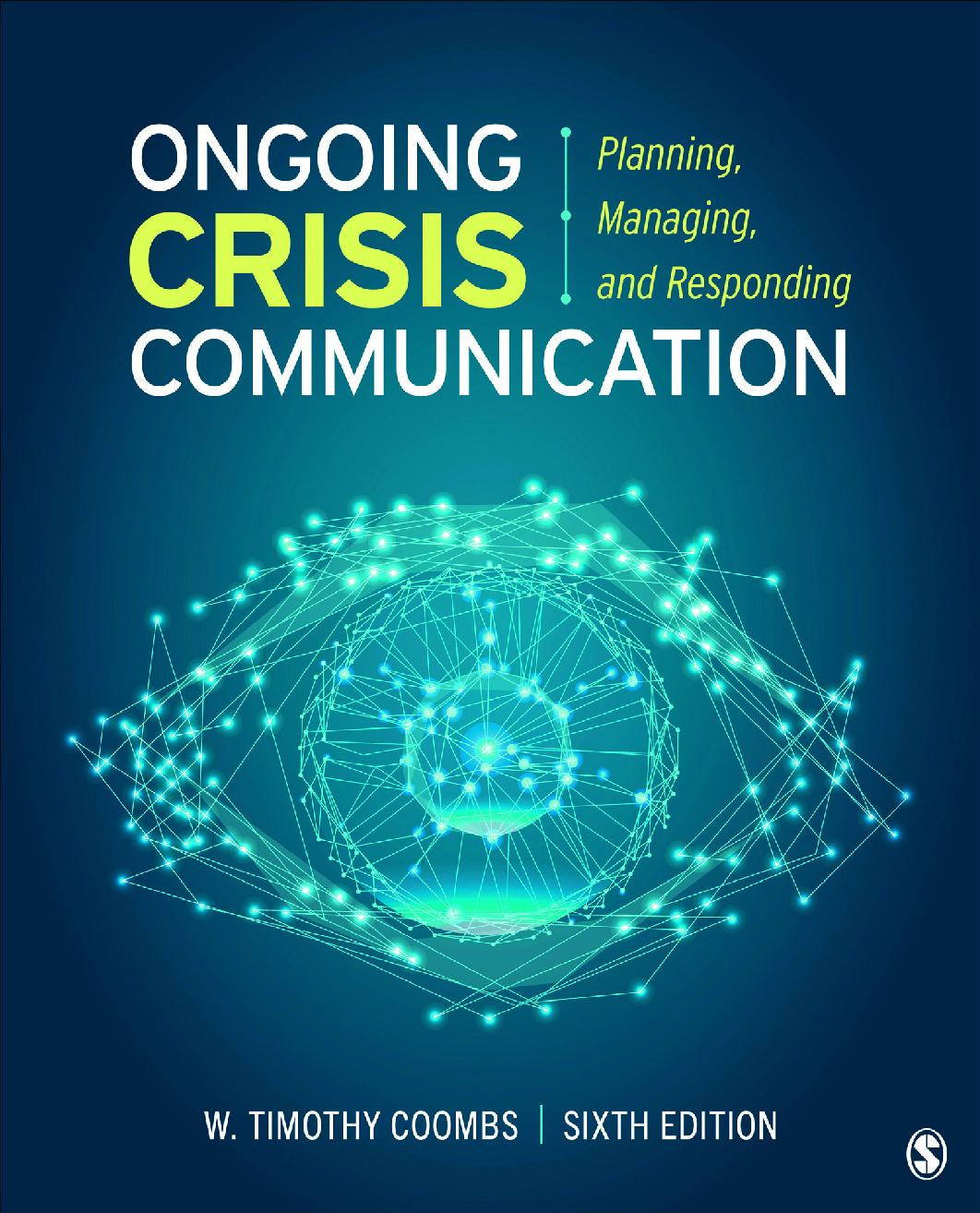
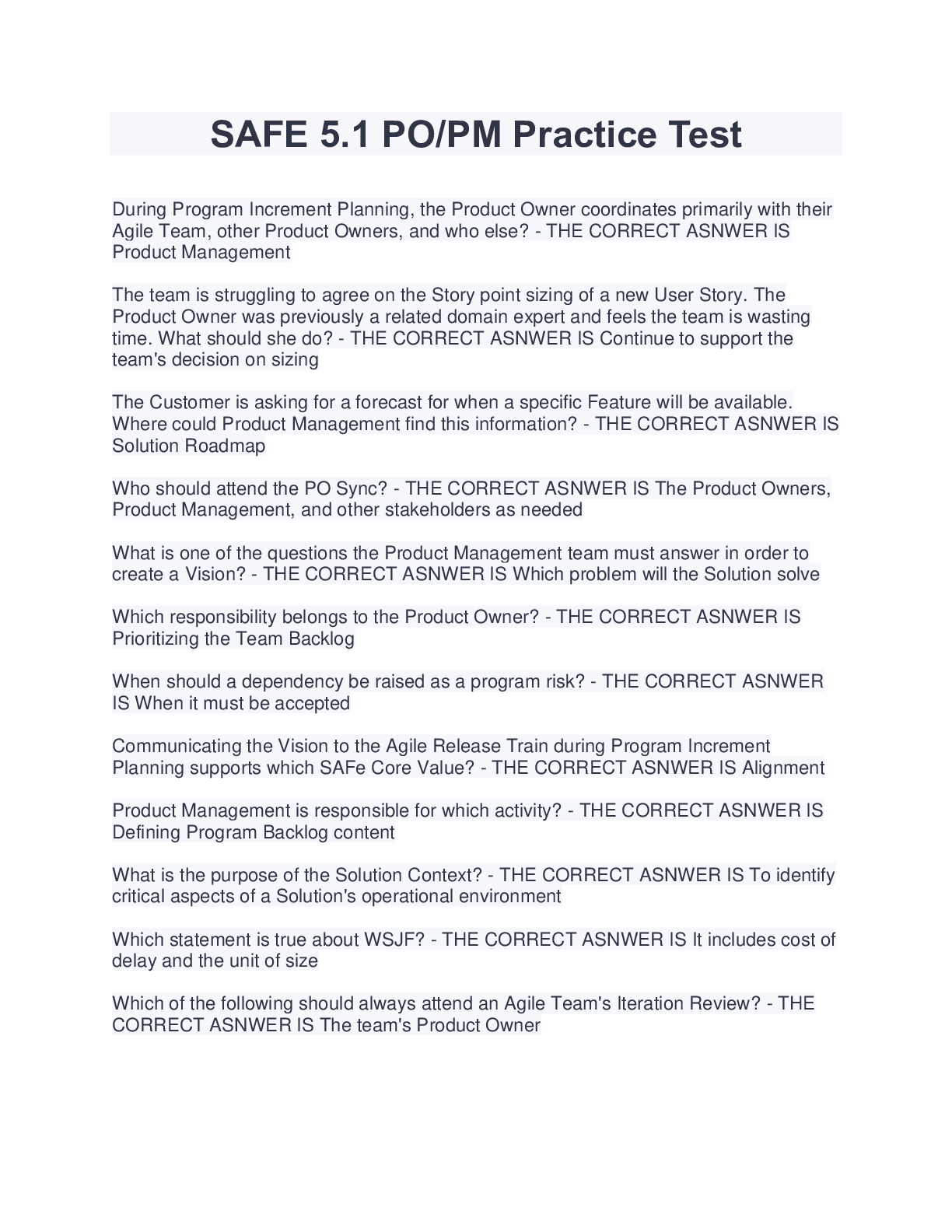
.png)


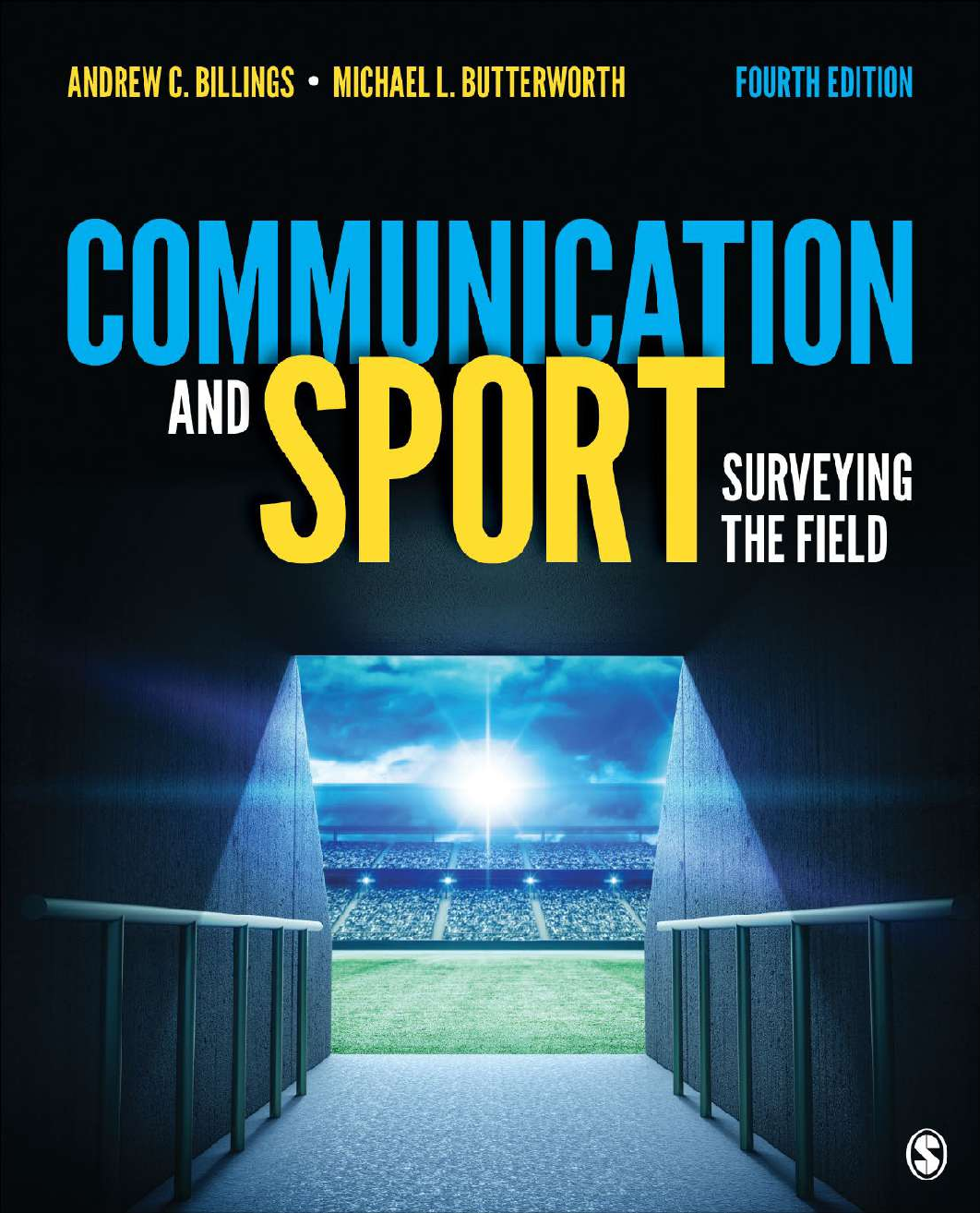
.png)

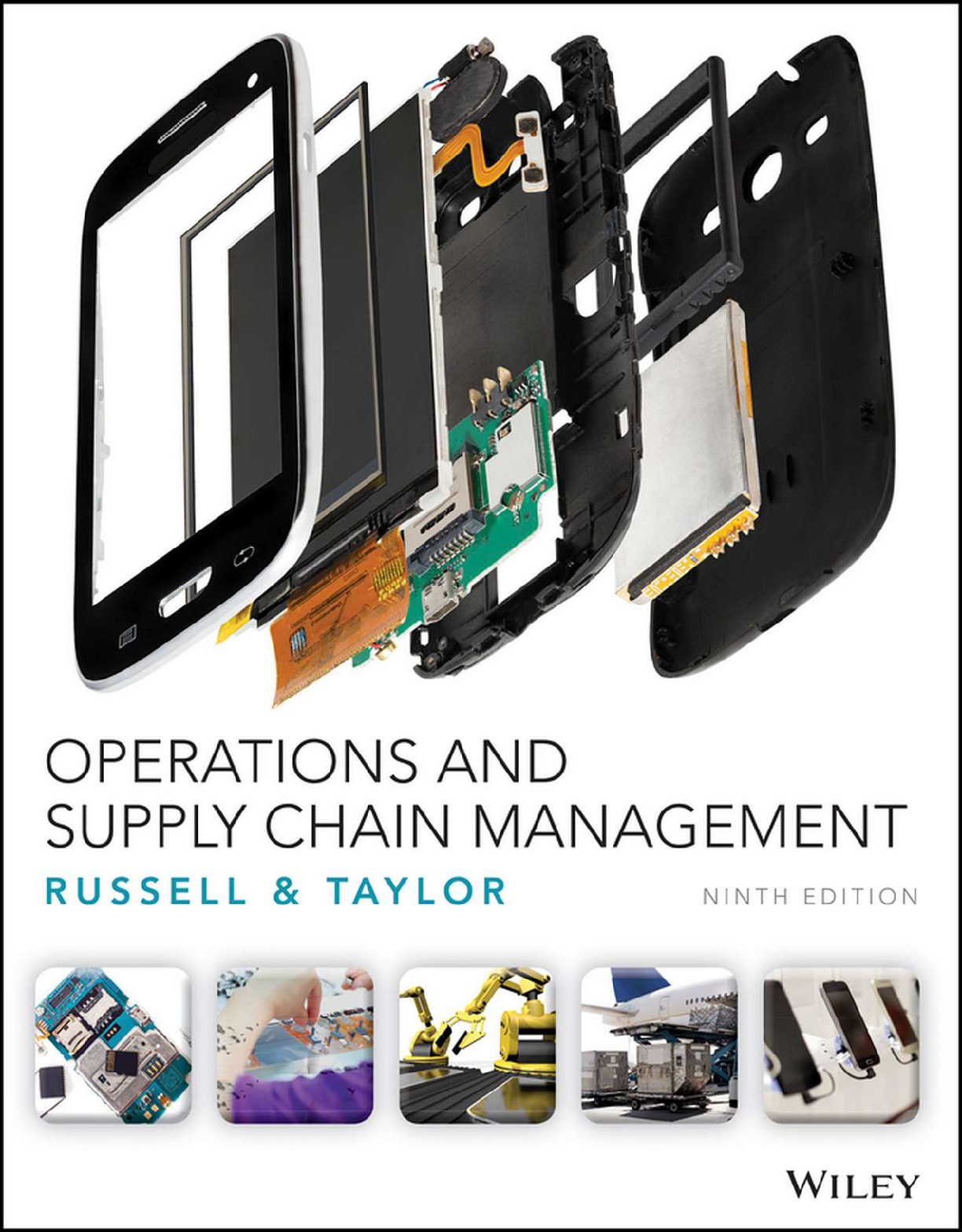


.png)


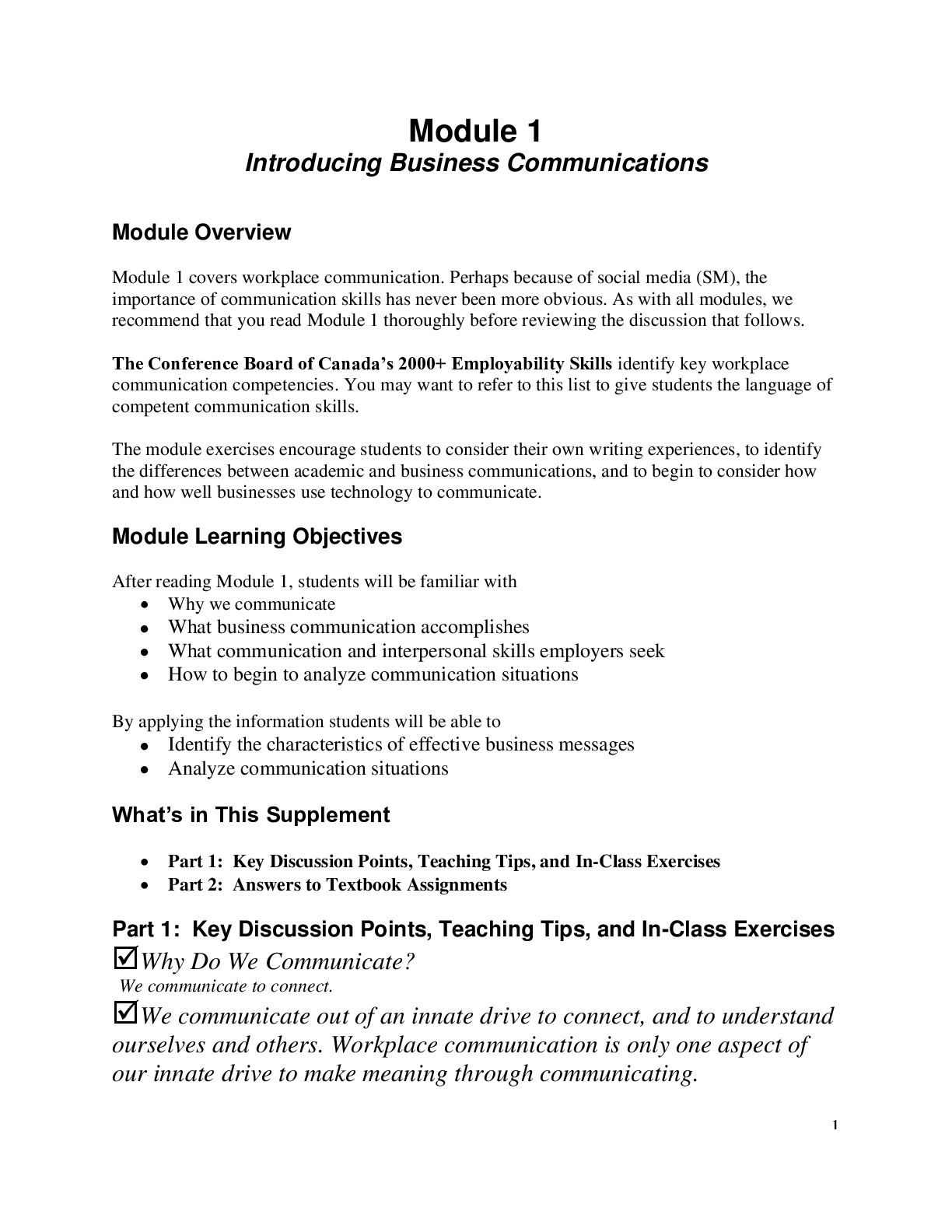






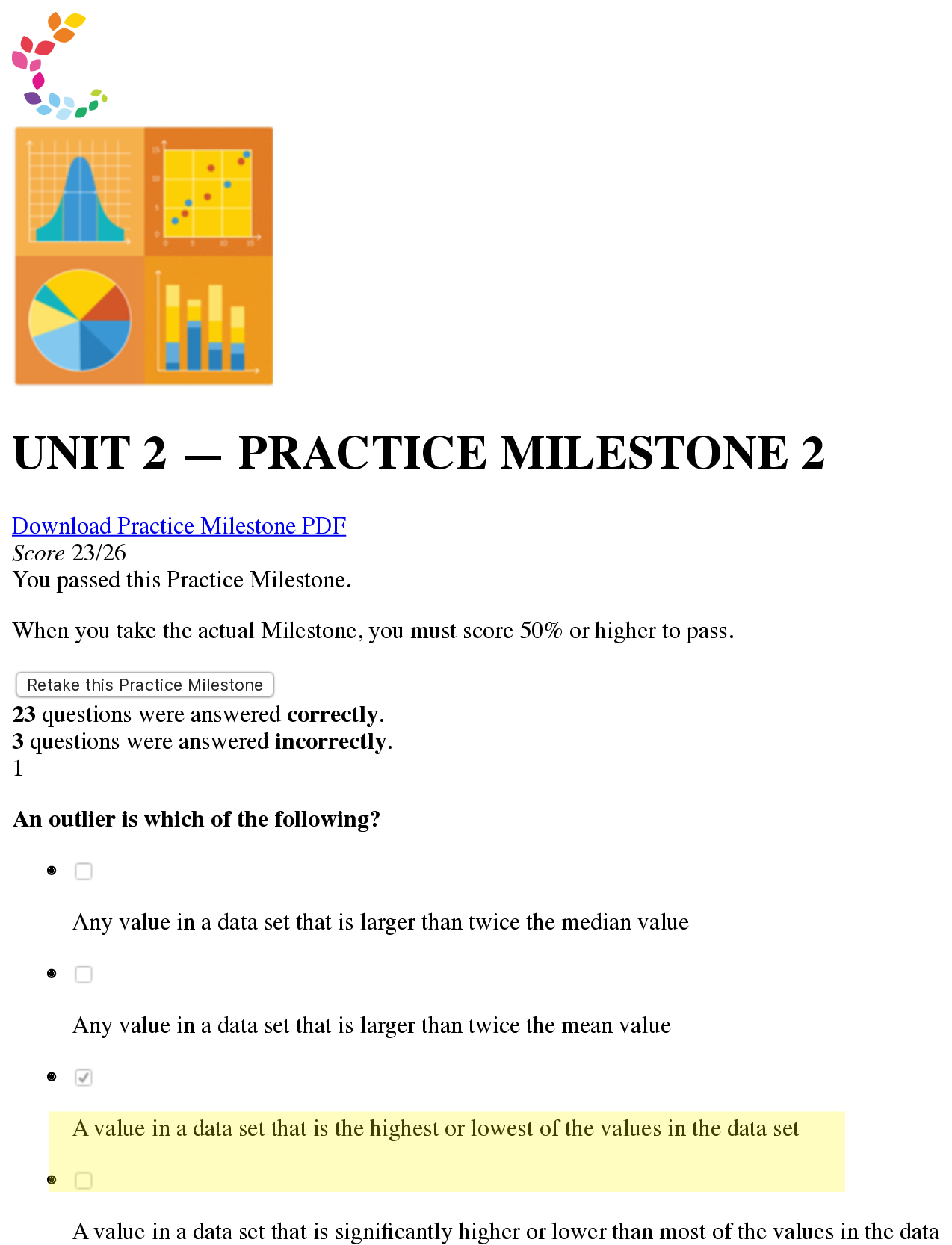



 – University of Maryland.png)
 – University of the People.png)
 – University of the People.png)
 – University of the People.png)
 – University of the People.png)
 – University of the people.png)
 – University of the People.png)



